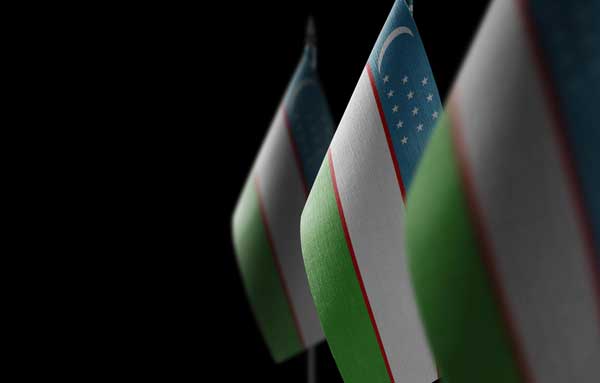Tucked away in the heart of Central Asia lies a captivating country that remains relatively unexplored by global tourism – the wondrous land of Uzbekistan. This ancient Silk Road destination abounds with cultural treasures and gastronomic delights waiting to be uncovered.

A Hub of Islamic Civilization
Uzbekistan once served as the thriving capital and lifeblood of the early Islamic empire. The famed cities of Samarkand and Bukhara were influential centers where Islamic culture blossomed. Prominent Muslim scholars like Ibn Sina, Al-Khwarizmi, Al-Farghani and Al-Bukhari made pioneering contributions in areas like science, mathematics and Hadith compilation under the patronage systems in this region.
Additionally, Uzbekistan boasted some of the largest and most magnificent cities during the empire of Amir Timur. Revered as the most pivotal figure in Uzbek history, Timur played a key role in saving Central Asia from Mongol conquests and ensuring the continuation of Uzbek heritage. His rule also marked the construction of Islamic colleges known as madrasas, including the iconic Registan complex in Samarkand recognized by UNESCO.
Fast forward to present day – Uzbekistan is now home to 35 million people and only became an independent nation 32 years ago after the dissolution of the Soviet Union. Although it endured over six decades of Soviet influence from 1924-1991, the Uzbek people tenaciously preserved their distinct identity, language and Islamic faith.
The national currency is called the Som (SUM) and their economy depends heavily on cotton and wheat exports. The country also possesses abundant gas, oil and gold reserves. However, much of the population still grapples with economic hardship. After 30 years of transitioning from Soviet policies, Uzbekistan strives to progress as a developing nation.
Architectural Masterpieces
A quick two-hour train ride transports you from Samarkand to the historic city of Bukhara. Once situated along the Silk Road trade routes, Bukhara houses the Kalon Minaret, an architectural marvel built in 1127 that miraculously still stands tall despite enduring the ruthless Mongol invasion.
Visitors can also witness Uzbekistan’s exemplary tradition of carpet weaving, which rivals the quality of renowned Persian rugs. Skilled local artisans, mainly women, produce splendid handmade carpets sold at bazaars as a source of income.
In addition, you’ll find reasonably priced handicrafts in Uzbekistan bazaars. However, imported products incur heavy import taxes – which explains why over 90% of vehicles crowding Tashkent’s streets are Chevrolet cars. To avoid the high taxes, automaker GM opened a local Uzbekistan factory manufacturing Chevrolet vehicles.
Tashkent is also home to Central Asia’s largest market dubbed Chorsu Bazaar that resembles a colossal tortoise shell dome when viewed from above. Locals fulfill all shopping needs under one lively roof. Vendors even offer tastes of products, coaxing browsers into a purchase. You can find vending machines stocked with sunflower seeds, the iconic Samarkand halva dessert and tart kurt cheese in such bazaars.
The Famous Uzbek Bread
The appetizing sights and smells are not limited to Uzbek bazaars. Tashkent and Samarkand house bakeries preparing Uzbekistan’s exceptionally flavorsome bread. The baking process exemplifies immense dedication – bakers literally step inside scorching tandoor ovens to evenly bake loaves.
The bread incorporates wholesome ingredients making it far more nutritious and longer-lasting than regular varieties. Folklore suggests Uzbek soldiers sustained themselves solely on this hardy bread for up to a month during wars! On average, a single bakery churns out around 8,000 loaves per day.
Meat-Loving Food Culture
During Soviet governance, Uzbekistan’s vibrant culinary identity faced near extinction. But the streets have reclaimed their gustatory zeal and Central Asia’s unofficial pilaf capital prides itself on meat-centric cuisine.
Eateries begin preparations in colossal cauldrons big enough to feed armies. The national dish, plov, involves gently frying pounds of meat and oil before integrating carrots, chickpeas and finally rice. Locals scorn undercooked meat so plov features only well-done, tender chunks. The addition of carrots lends the rice a subtle golden tinge.
So when traveling in Uzbekistan, expect abundant bread, rice and meat. Love of meat cuts across the culture so get used to generous portions of beef, lamb and even horse meat pilafs.
Hearty fare also includes the iconic samsa, a meat-stuffed pastry akin to a savory pie. Rural families often cook samsas in traditional tandoor ovens instead of modern gas stoves, enhancing flavor.
Vibrant Capital City Life
Beyond delectable cuisine, Uzbekistan offers intriguing glimpses into daily life. The capital Tashkent houses over 3 million residents as Central Asia’s most populated city. Resembling a mini Russia, Tashkent sports wide Soviet-style roads and architecture despite the relatively small populace and vast 449,000 square kilometer territory.
Look closely and you may spot relics of Soviet playground structures still dotting backstreets. Such similarities prevailing in ex-Soviet countries never cease to surprise. Given the steady influx of Russian immigrants, one finds Russian translations accompanying Uzbek text – especially in bookstores.
The Uzbek tongue shares linguistic connections with Turkish too. Vendors hawk goods along bustling roadsides while global mega-chains like Zara tap into swelling consumer demand.
Unfortunately, glimpses of poverty exist beside prosperity with young children begging on streets. The metro system facilitates affordable intra-city travel but inter-city journeys rely largely on trains. Workers don smart uniforms while average salaries hover around $500 monthly.
This pales in comparison to the $320 minimum wage and spurs massive youth emigration. With incredible culture and cuisine tempered by economic struggle, Uzbekistan encapsulates the mystique of the Silk Road region.
